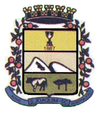São Joaquim
| São Joaquim | |||
|---|---|---|---|
| Municipality | |||
| Municipality of São Joaquim | |||
 | |||
| |||
 | |||
| Coordinates: 28°17′38″S 49°55′55″W / 28.29389°S 49.93194°WCoordinates: 28°17′38″S 49°55′55″W / 28.29389°S 49.93194°W | |||
| Country | Brazil | ||
| Region | South | ||
| State | Santa Catarina | ||
| Founded | April 7, 1887 | ||
| Government | |||
| • Mayor | Newton Stelio Fontanella (PP) | ||
| Area | |||
| • Total | 1,885.608 km2 (728.037 sq mi) | ||
| Elevation | 1,360 m (4,460 ft) | ||
| Population (2009) | |||
| • Total | 25,122 | ||
| • Density | 12.3/km2 (32/sq mi) | ||
| [1] | |||
| Time zone | UTC-3 (UTC-3) | ||
| • Summer (DST) | UTC-2 (UTC-2) | ||
| HDI (2000) | 0.865 – high | ||
| Website | City Hall Website | ||
São Joaquim is a municipality in the state of Santa Catarina, situated in southern Brazil. It is located at latitude 28 ° 17 '38 "south and longitude 49 ° 55' 54" West, with an altitude of 1353 meters. Its population in 2004 was 23,114 inhabitants. Located in the Planalto Serrano, is located 136 km to Tubarão, 81 km to Lages and 227 km to Florianópolis. The town has a large ethnic diversity, including Italian, Portuguese, Japanese and Afro- Brazilians, though composed mainly of descendants of German and Swedish immigrants.[citation needed] There is also a large population coming from other states, mainly from Rio Grande do Sul.
Main economic activities
The town's economy was based on livestock, but recently the cultivation of temperate fruits such as apples has grown. Today, São Joaquim is the largest producer of fruit in the state, with over 1000 small producers. Tourism is also important for the town, which is one of the coldest places in Brazil and sometimes receives fall of snow flakes, something lacking in the vast majority of Brazil (although refreezed snow, that by itself is not present in most of Brazil, seldom happens in many tropical areas such as about half of Southeastern Brazil). The town is also known for its wines, such as Villa Francioni, Joaquim, Quinta da Neve, Núbio and Suzin, which are reaching international recognition, especially in East Asia.
Geography and climate
Situated 1,353 meters above sea level, São Joaquim is one of the highest cities in the country, as the altitude of the municipal seat. The climate of the city is temperate (Cfb), with cool summers and low winter temperatures - the mercury has already scored −10 °C (14 °F) in the winter of 1991, and the record of the city - the records in Brazil are from −14 °C (7 °F) in the municipality of Caçador, and unofficially −17.8 °C (0 °F) in Morro da Igreja (Church Hill), in the neighboring municipality of Urubici. In summer the highest temperature ever recorded was 31.4 °C (89 °F). Along with Urupema in the state, and São José dos Ausentes in Rio Grande do Sul, it is the coldest city of Brazil, with average annual temperature of 13 °C (55 °F). The hottest month is January with an average temperature of 17 °C (63 °F) while the coldest month is July with an average of 9 °C (48 °F). During the months of winter, it is common the occurrence of frost and occasionally in the cold days of more intense rainfall of snow, that however does not appear many times a year and seldom is intense, because of its relatively low latitude, that is lacking to provide conditions for more abundant and more frequent snowfalls.
| Climate data for São Joaquim | |||||||||||||
|---|---|---|---|---|---|---|---|---|---|---|---|---|---|
| Month | Jan | Feb | Mar | Apr | May | Jun | Jul | Aug | Sep | Oct | Nov | Dec | Year |
| Average high °C (°F) | 23.1 (73.6) |
23.1 (73.6) |
21.7 (71.1) |
18.8 (65.8) |
16.3 (61.3) |
14.7 (58.5) |
14.7 (58.5) |
16.0 (60.8) |
17.1 (62.8) |
18.9 (66) |
20.6 (69.1) |
22.2 (72) |
18.93 (66.09) |
| Average low °C (°F) | 12.9 (55.2) |
13.3 (55.9) |
12.4 (54.3) |
9.7 (49.5) |
7.6 (45.7) |
5.9 (42.6) |
5.7 (42.3) |
6.4 (43.5) |
7.3 (45.1) |
8.7 (47.7) |
10.2 (50.4) |
11.7 (53.1) |
9.32 (48.78) |
| Precipitation mm (inches) | 168 (6.61) |
160 (6.3) |
132 (5.2) |
107 (4.21) |
112 (4.41) |
119 (4.69) |
140 (5.51) |
170 (6.69) |
170 (6.69) |
152 (5.98) |
135 (5.31) |
130 (5.12) |
1,695 (66.72) |
| [citation needed] | |||||||||||||


See also
References
External links
| |||||||||||

